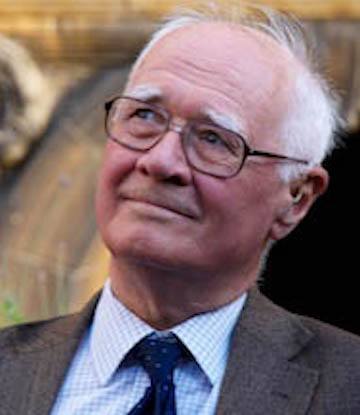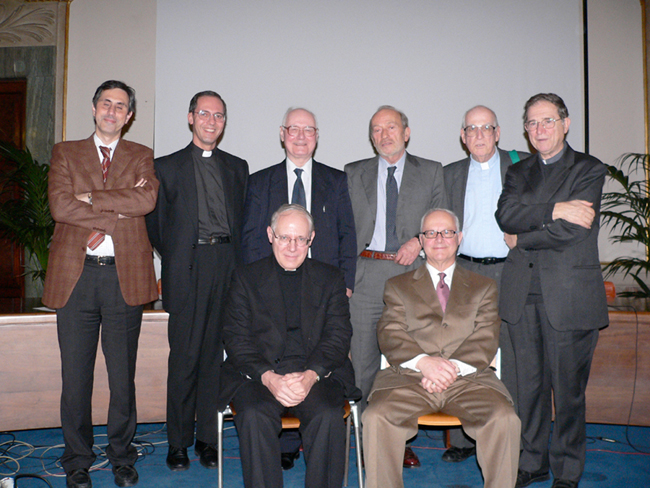J ohn Polkinghorne, one of the most active, known and loved personalities in the field of Science and Religion studies, passed away on last March, 9. He was born in Weston-super-Mare, United Kingdom, on October 16, 1930. Templeton Prize in 2002, Polkinghorne was a man of science. Until the age of 50, he had worked in the field of elementary particles as a theoretical physicist. He received his doctorate in 1955, under the guidance of Nobel laureate Abdus Salam, working in the research group created by Paul Dirac. A postdoctoral fellowship at the California Institute of Technology in Pasadena, allowed him to work for some time with another big name in XXth century physics, Murray Gell-Mann. In more than 25 years dedicated to work in particle physics, Polkinghorne collaborated on the discovery of the quarks and on the foundations of the S-matrix theory, which would later give rise to the contemporary string theory. In addition to Cambridge, were places of his scientific activity Princeton, Berkeley, Stanford and CERN in Geneva.
ohn Polkinghorne, one of the most active, known and loved personalities in the field of Science and Religion studies, passed away on last March, 9. He was born in Weston-super-Mare, United Kingdom, on October 16, 1930. Templeton Prize in 2002, Polkinghorne was a man of science. Until the age of 50, he had worked in the field of elementary particles as a theoretical physicist. He received his doctorate in 1955, under the guidance of Nobel laureate Abdus Salam, working in the research group created by Paul Dirac. A postdoctoral fellowship at the California Institute of Technology in Pasadena, allowed him to work for some time with another big name in XXth century physics, Murray Gell-Mann. In more than 25 years dedicated to work in particle physics, Polkinghorne collaborated on the discovery of the quarks and on the foundations of the S-matrix theory, which would later give rise to the contemporary string theory. In addition to Cambridge, were places of his scientific activity Princeton, Berkeley, Stanford and CERN in Geneva.
In 1982 something new happens. John Polkinghorne decides to leave his research activity in particle physics to become an Anglican priest. From that date, he devoted himself to pastoral work in the Anglican Church, mainly in the university environment, at Trinity College and then at Queen's College, Cambridge (UK), becoming President of the latter until 1996. These were the years in which he enthusiastically and competently explored the relationship between scientific thought and Christian faith, publishing over 30 books, many of which were translated into other languages. It is sufficient to mention just a few. The first of them, One World (1987), marks the basic conviction of his thought: we live in one world, the world object of science is also the same world that believers know God created, and this prompts our minds to look for an organic and unitary vision of reality. This essay was soon followed by multiple other volumes, including: Science and Creation (1988); Reason and Reality (1991); The Way the World is: the Christian Perspective of a Scientist (1992); Science and Providence: God's Interaction with the World (1993); Quark, Chaos, and Christianity (1997); Believing in God in the Age of Science (2000); The God of Hope and the End of the World (2002); and Science and Religion in the Quest of Truth (2011). Two volumes have particular autobiographical value, The Faith of a Physicist. Reflections of a bottom-up thinker (1994) and From Physicist to Priest (2007). Polkinghorne took part in the “Society of Ordained Scientists,” founded in 1986 by Arthur Peacocke, which included other scientists-priests of Protestant churches, including Robert J. Russell, founder of the Center for Theology and The Natural Sciences in Berkeley.
Polkinghorne's biography is in a sense unique. The seriousness with which he devoted himself to interdisciplinary work on science and theology was the same that had accompanied his activity as a researcher in the field of particle physics. His research, in a certain sense, had not been interrupted, but continued in a new field, just as wide, if not even wider and deeper than the previous one. Jovial, ironic, helpful, conversing with him was always a great pleasure for everyone.
I personally met John in 1999, when I went to visit him at his home in Cambridge, to invite him to participate in the Interdisciplinary Dictionary of Science and Faith, whose project I had started a few months before with Alberto Strumia. He listened carefully to the guidelines of the project and accepted to collaborate with two entries, Reductionism and Quantum Mechanics. We came back to see each other in different occasions. Particularly significant was the Conference Believing in God on the Paths of Science, that I was able to organize in 2004 together with the Association Oriente-Occidente in Ancona and to which, besides Polkinghorne, took part John Barrow, Bill Shea, George Coyne and other important scholars. In our last meeting, which took place in Cambridge in 2011, on the occasion of a conference at the Faraday Institute, I asked him a dedication for me to be put on his last book Theology in the Context of Science. Polkinghorne wrote a simple biblical reference from the New Testament, 1Th 5:21, telling me that everything he had to say or advise me, in my studies on science and faith, was written there. Opening the New Testament, we can actually read there the Pauline exhortation, "Sift through everything and keep what is good." This synthetic dedication contained the idea of discern among the many thoughts and contributions that are proposed in this area of research, weighing them well, keeping what truly cooperates with the progress of knowledge, what brings us closer to the truth. It is precisely to this end, to a more harmonious knowledge of the truth, that John has helped us, with his works and his example of life.
Giuseppe Tanzella-Nitti
© 2021 Interdisciplinary Documentation of Science and Faith
Video interview to John Polkinghorne on occasion of his 2002 Templeton Prize
John Polkinghorne interviews courtesy of Counterbalance.org

Ancona, Dec. 2, 2004. John Polkinghorne is third from left, standing. In sequence, before him, Flavio Keller, Giuseppe Tanzella-Nitti; after him: Tullio Manzoni, George Coyne, Fiorenzo Facchini. Seated: Juan José Sanguineti and William Shea.